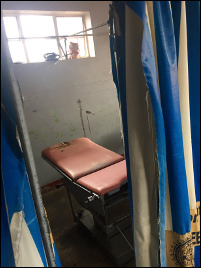Nicholas LeFevre, MD: Greater Lawrence FM PGY 3
Uganda: January 2016

I recently traveled to Mbara, Uganda for 3 weeks of working on the ground with the Obstetrics residents at the Mbarara University of Science and Technology. MUST is the second largest teaching hospital in the country of Uganda. MUST attends to between 10,000 and 12,000 births yearly, roughly 4000 of which are emergency cesarean sections. The birth rate in Uganda still approaches nearly 7 per woman. In Uganda, residents pay, rather than get paid, for the chance to enroll in residency programs. The hospitals are chronically understaffed and undersupplied by the government. Neonatal death, stillbirth, uterine rupture, puerperal sepsis, materal child HIV transmission, and ecclampsia are still large problems in the country. While there I worked with the residents and midwives on their busy service. In one week's time, I assisted or helped perform more than 30 cesarean sections with the residents and faculty there. In addition to working as a resident during my time there, we were able to share information about our respective practices with one another and help to teach one another about patient management in our respective resource environments. I was also able to use my knowledge of ultrasound to help continue to teach local residents these skills as use of this technology starts to become more standard there. It was a valuable working and learning experience both for me and for the residents and faculty with whom I worked. I plan to return.